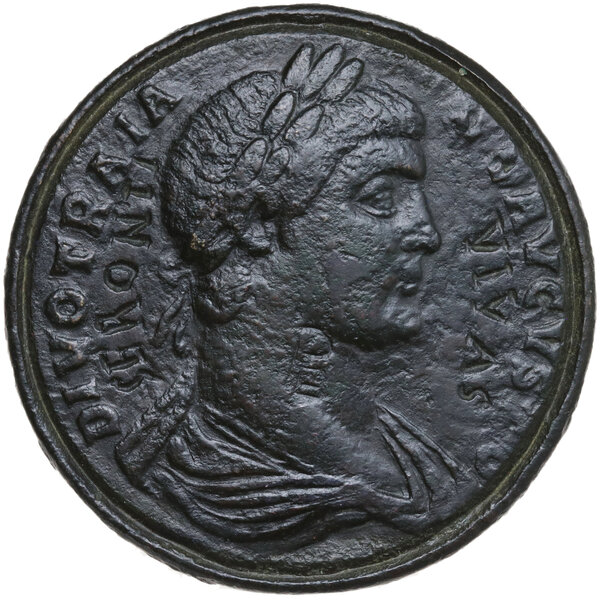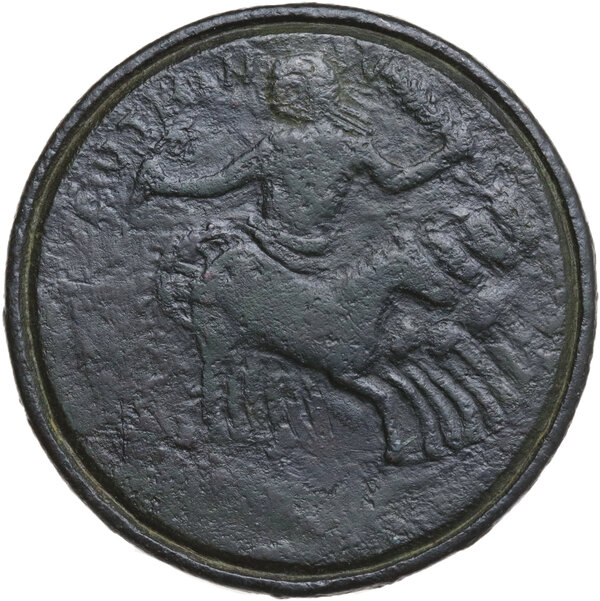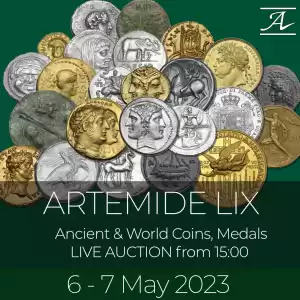

Trajan (Divus, died 117). AE Contorniate, struck in the name of Divus Trajan. Rome mint, c. 360-425 AD. Obv. DIVO TRAIANO AVGVSTO. Laureate and cuirassed bust right. Engraved: SERONTI VIVAS and monogram PE. Rev. ...EVTHIMIVS ... Charioteer driving fast quadriga right, holding palm branch. Cfr. Tocci 1965, p. 225, n. 31. 25.29 g. 38.30 mm. RRR. Estremely rare, unlisted in Coinarchives. Minor smoothing. VF/About VF. The term contorniate derives from the Italian contorno (surround) and was applied in the eighteenth century to describe these coin or medal-like objects which are surrounded by a solco di contorno (surrounding furrow). Contorniates were produced in the late 4th through 5th centuries and may have been used as presentation pieces or as counters in a board game, such as calculi, or both. A connection with the circus and amphitheatre is obvious for they are generally of a popular historical, imperial, or agonistic character, the most common being the busts of Emperors and scenes of chariot racing. The legends often give the names of charioteers. It is also significant that the emperors who appear most frequently on the obverse are the ones who gave the most enthusiastic patronage to the games: Nero, Trajan, and Caracalla. (CNG, Historical Article).


